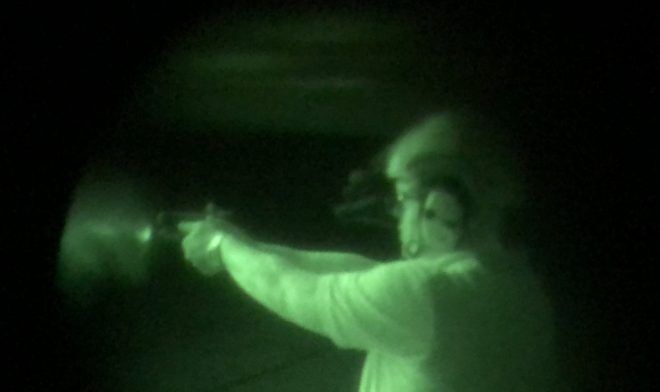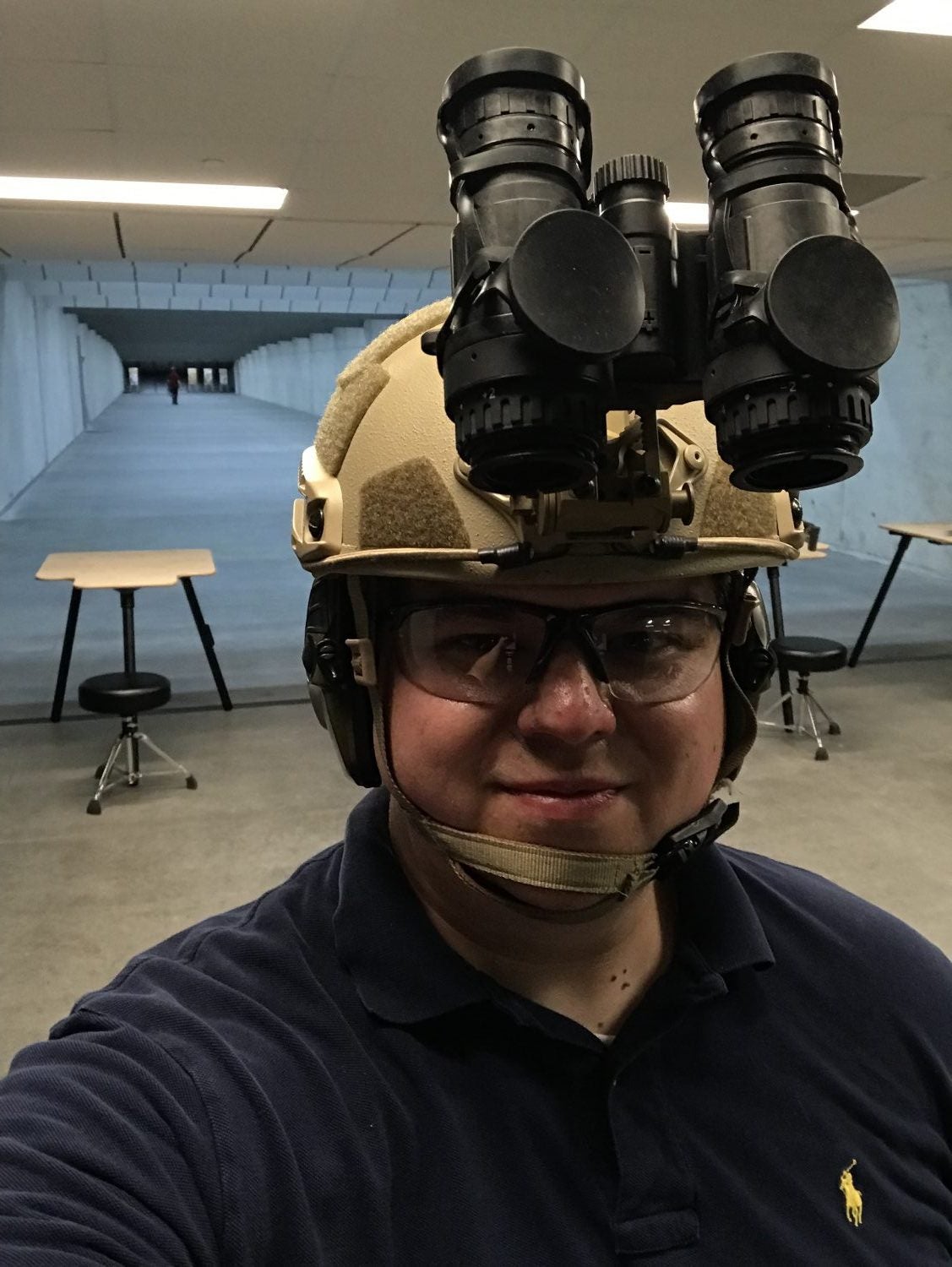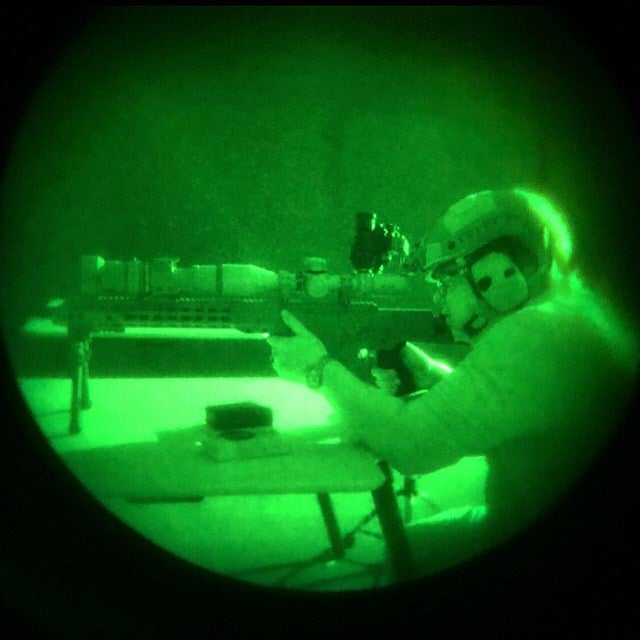One of the great things about the gun community is the variety of experiences you can have over time. Whether it’s sporting clays or tactical carbine classes there are always new techniques and skills to learn. Shooting drills and doing transitions while using night vision was one of the best experiences I’ve had in a long time. Recently on my trip to Vortex Optics HQ, we did a condensed night vision course and I was able to use a variety of different systems.

Night Vision Expectations
Before doing the night vision course, I was expecting to automatically see everything in the dark as soon as I put the dual illuminators down on my Team Wendy helmet. I always expected everything to be a vibrant green with clearly defined shapes when looking around the room. I expected the dual illumination tubes to be fairly light and clip onto my helmet without anything else weighing down my helmet. When the vast majority of people think about using night vision, it would be the same stereotypes I listed above.

Night Vision Reality
Once I got my Team Wendy helmet adjusted and the NODs set up for me, it was time to shoot. The reality of night vision set in fairly quickly and the learning curve kicked in. One of the first issues to pop up was the imbalance of weight on my helmet. I never thought about putting a counterbalance on the rear section of my helmet to balance the weight of the BNVD NODs upfront. We were running the various night vision courses in Vortex’s underground shooting complex, so there wasn’t much ambient light getting into the room. This made the night vision work harder to pick up any light so it could project an image into the tube. This wasn’t really an issue since we had infrared flashlights and lasers, but it was surprising to me.
Probably the most amazing thing to me was the infrared lights and lasers under night vision. Even though it is visible in night vision, I thought it was impressive there was zero chance of seeing any of them with the naked eye. It’s something I’ve learned about countless times with light spectrums but seeing it for yourself is definitely eye-opening. Another thing that caught me off guard was the difference in shooting stance. With night vision, it’s really tough to aim down. Most red dots will still be visible under night vision but it’s way easier to rely on an IR laser rather than fighting with your optic. It was really a strange feeling shooting from the low ready position basically without putting your head down to look through the optic. Handguns felt much more natural with a red dot installed on a Gen 5 Glock 17.

Shooting Long Range With Night Vision
After a while, we switched from drills with night vision to doing bench rest shooting. They had a Barrett MRAD chambered in 6.5 Creedmoor. The MRAD had a Vortex Razor HD Gen II and PVS30 clip-on set up for us to use. We started shooting precision groups using the PVS30 night vision. Shooting with a clip-on night vision unit was much easier to do than using the BNVD system for the first time. Shooting the MRAD was just like any other time I shot a scoped rifle, but with a green tint.

Overall Thoughts
At the end of the day, I was surprised by the differences between expectation and reality. I think its definitely a different set of skills that take time to become comfortable with. I think everyone should try out night vision if they are given the opportunity. Just experiencing the feeling of shooting in the dark is worth the time. It’s also a great way to tactically LARP if you are into doing that, but it’ll cost a pretty penny just to look cool. Let me know what you guys think of night vision in the comments below. If you have any questions feel free to message me on Instagram @fridgeoperator. Stay safe out there!
We are committed to finding, researching, and recommending the best products. We earn commissions from purchases you make using the retail links in our product reviews. Learn more about how this works.
 Your Privacy Choices
Your Privacy Choices
